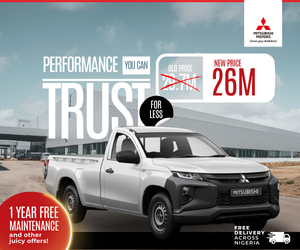Gone are the days when a cars safety features were limited to just Anti-lock Braking System(ABS), a couple of airbags, traction control and a 3 point seat belt.
Today, buyers won’t let go of their hard-earned cash if there aren’t an ample amount of safety features for their cars. The sheer number of driver-assistance/ safety features have grown tremendously in the last few years it’s not hard to be confused about what technology does what.
So here are five safety features no new car should be without and what they do.
Adaptive Cruise Control
Adaptive cruise control is now available on a vast majority of cars on the road. The way adaptive cruise control works is by locking onto the car in front of it with the cars RADAR and Camera systems mostly mounted in the car’s grille.

It applies the accelerator when needed and brakes when needed. It is mostly used on long highway commutes and during traffic congestion. If the system senses a collision it breaks heavily and tightens your seat belt.
Active Park Assist
With the help of radar and sonar, cars equipped with active park assist will actively seek out and measure parking spaces ahead and then actively steer the vehicle into space while the driver controls the brake and accelerator inputs. Some auto manufacturers provide both parallel and perpendicular parking while others limit the car to one or the other. In our experience, these systems aren’t perfect and are easily tripped up by curbs, closely parked vehicles and other environmental factors.
Lane Departure Warning/ Lane keep assist
These are actually two different systems but for the sake of argument, I will include them under the one banner here because they both work to keep you in your lane. Lane departure sounds a warning or buzzes your seat or steering wheel to inform that you are crossing the white lines or unintentionally leaving your lane.

Lane Keep meanwhile, will gently steer you back into your lane if you drift out of it. When lines are faint or the system has trouble detecting lines, the system can be switched off.
Blind Spot Monitoring
Using sonar sensors in the rear bumpers or sometimes cameras in the exterior mirrors, blind-spot monitoring systems watch adjacent lanes and can alert the driver to other vehicles that might be in the driver’s blind sport or hidden by the car’s roof pillars.

Most cars with this feature have warning lights in the exterior mirrors that illuminate or flash when a vehicle is detected close by and one lane over; some vehicles also beep if the turn signal is activated while a car is in the adjacent lane. We find blind-spot monitors generally work quite well and can help keep you from cutting off another driver.
Forward Collison Warning
Similar to adaptive cruise control, forward-collision warning systems use radar, cameras, or both to watch the road ahead for slow or stopped traffic. Forward-collision warning is a more basic form of collision mitigation and will alert the driver–usually with both a visual and an audible warning–that a collision is imminent, in the hope that the driver will hit the brakes. These systems are sometimes accompanied by automated emergency braking that will brake for the driver if no action is taken, but drivers should be aware that not all vehicles combine both features.












